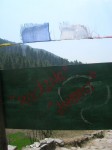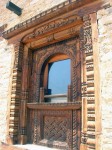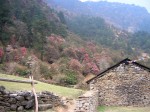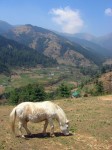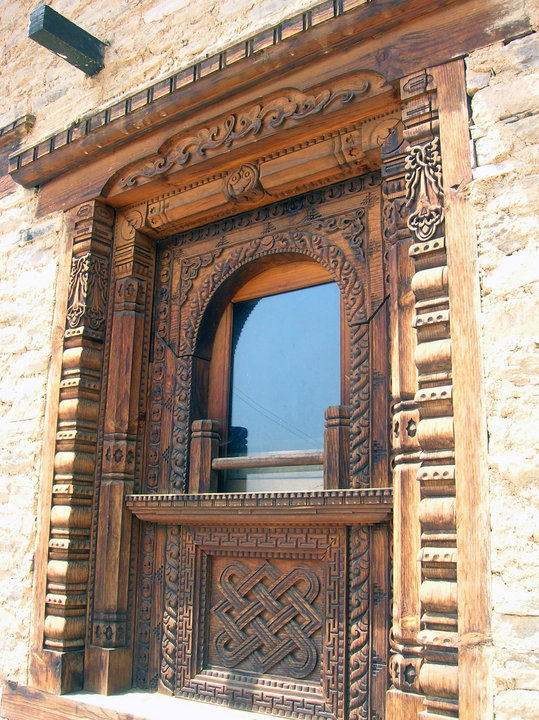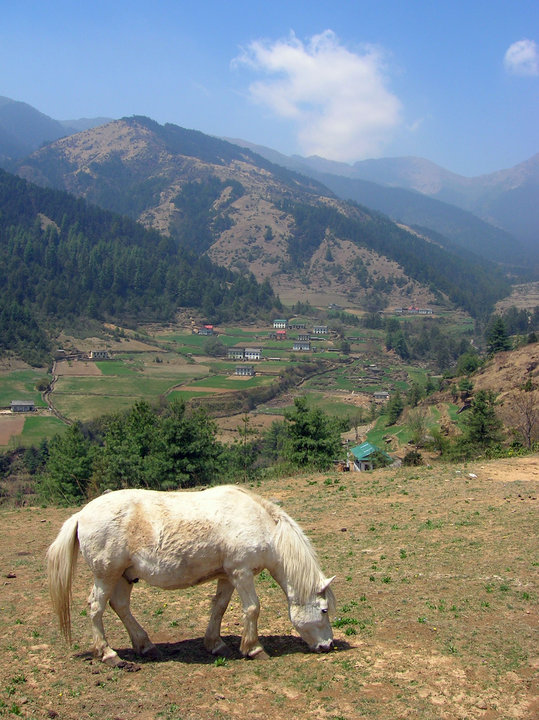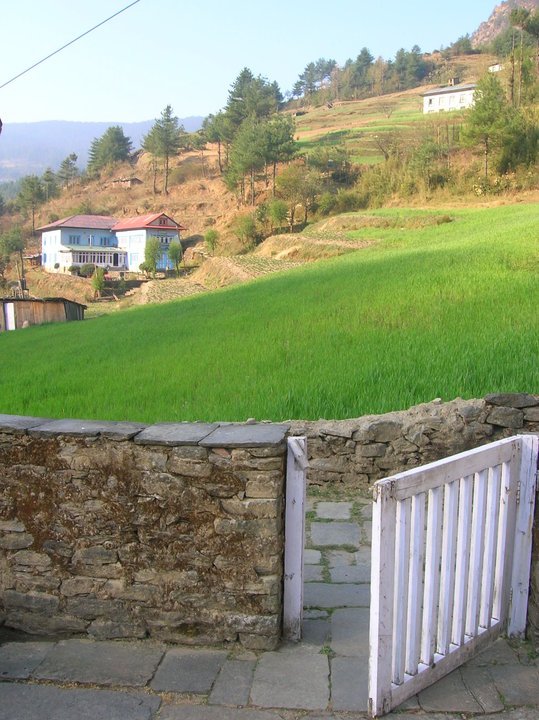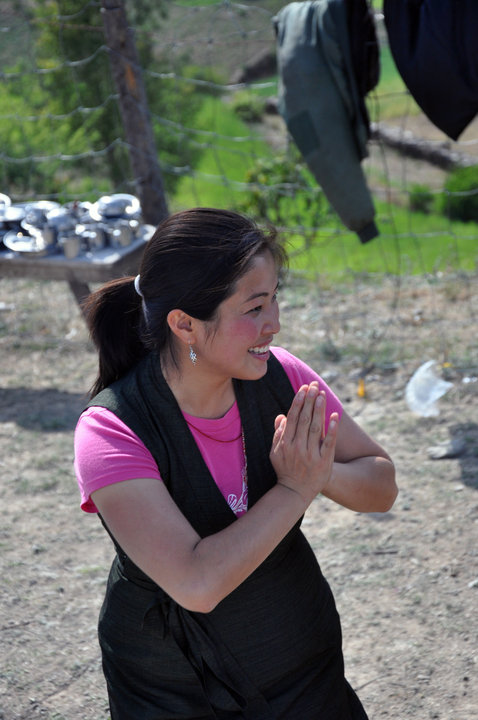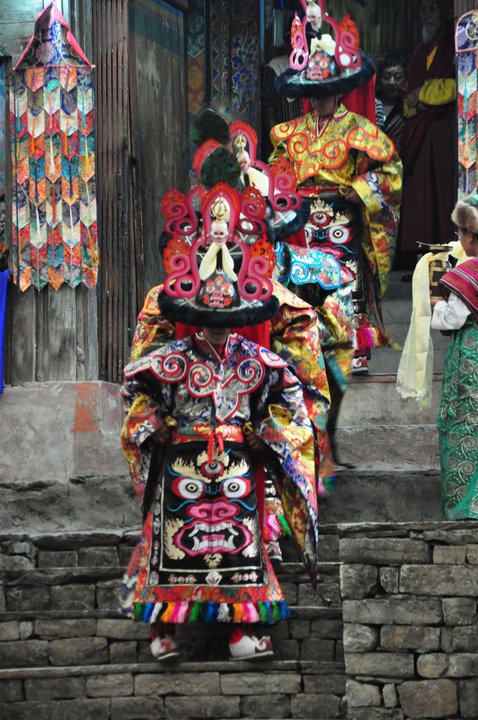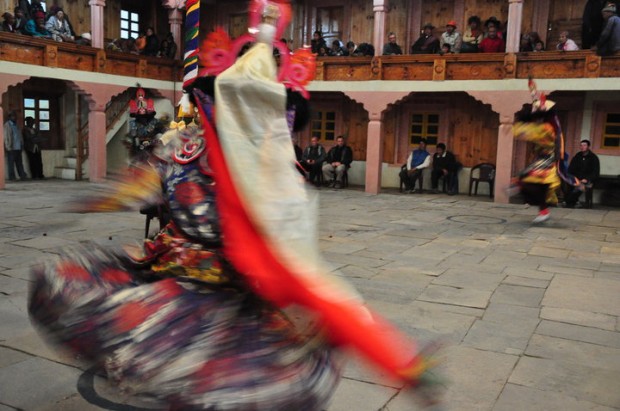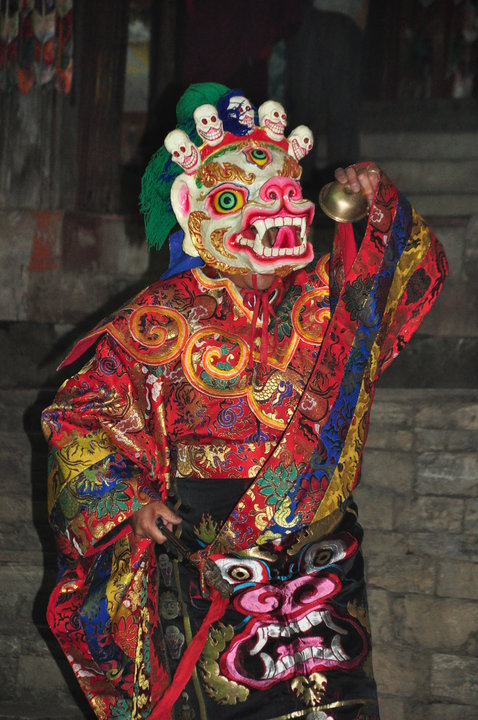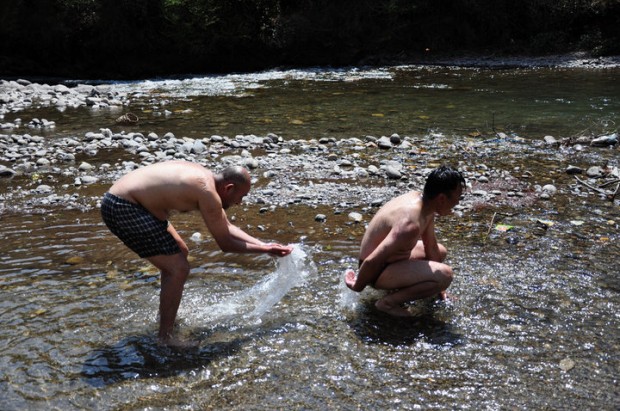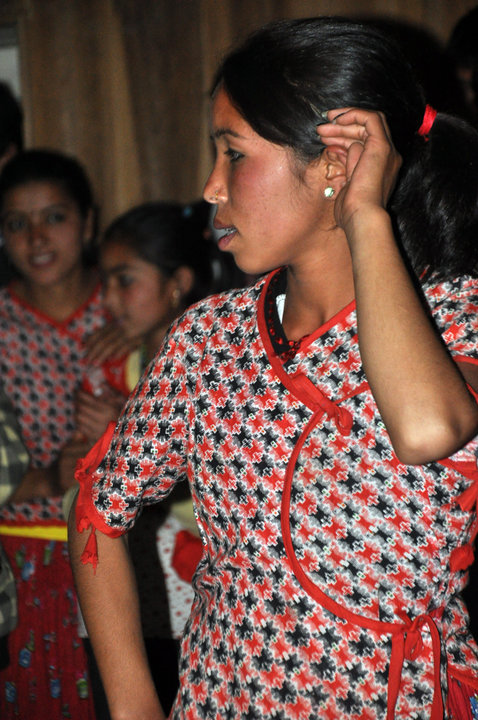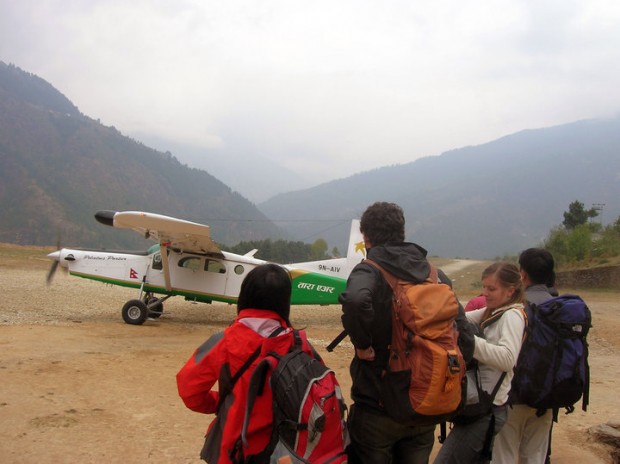I wrote this travelogue on a trip to Junbesi in Solukhumbu (Everest Region) in Spring of 2010. You can ask me questions about the trip, in the comment box below.
For me and a couple of my friends: this was a 20 year old plan in the making. Jun-besi, a Sherpa village which lies on the original trek to Mount Everest. This trip covers from Kathmandu to Phaplu and Junbesi (typically the 1st part of the route that the 1953 expedition including Tenzing Norgay and Edmund Hilary took on the way to conquering Mount Everest for the first time).
Good time to go there is between April to June (when Rhododendron trees light up the country-side) or the Autumn(Fall) season when a lot of festivals are celebrated (September-October) plus the skies are clearer.
Ever since I met Mingma Gyalzen Sherpa in middle school, when the lights would get switched off, many nights in the dormitory, we would gather around him and listen to tales woven about his adventures back in Junbesi, his Sherpa village. And every year, we would promise to go there together for a long vacation. It took us 20 odd years to turn this into reality. On April 2010, we finally gathered to go ahead. There were 9 of us, 5 Nepalis from Bajura, Syangjya, Accham, Darchula, Solukhumbu together a Swiss, a Finn, an American and a Chinese. Our plan was to trek up to Junbesi in Solukhumbu and then fly back to Kathmandu.
April 8th: Kathmandu (1300m) to Jiri to Garjang
It was one hell of a drive from Kathmandu to Jiri along steep, serpantine roads. We had rented a Tata Jeep (supposed to be a 4 wheeler, but very shady looking). We started at 7:30am. Mingma (Ming), our travel organizer, forgot that we were all pretty plump people, so it took some pushing and pulling to adjust all of us into that jeep! So slowly we made our way to Jiri (130 km to the east). We stopped for lunch around Mude, which basically had crap food. Packed lunch would have been a great alternative. We continued to follow the usual serpentine road leading up and down big hills until we finally reached Jiri around 5 pm. Ming was optimistic that we could reach another village called Deurali by nightfall, (which would save us one whole day). What we did not know, as we started onto the dirt roads, was that this was our driver’s first trip along this route. Without a map in hand, pretty soon it looked like we were lost on a dirt road leading to nowhere. Still we headed on and on, hoping that Deurali was nearby. By 9 pm in the night, it was clear now that we would have to stop at the nearest place possible, as we were lost. Even asking villagers several times along the way for directions, not one could give us a straight answer. As our optimism was soon fading, the boisterous crowd started becoming a silent, disgruntled one inside the Jeep.
Finally we made our way to the nearest village (which apparently was Garjang). Around 10 we crashed in the first guest house we saw there. We were pretty tired yet the guys managed to have the nerve and patience to ask the guest house to order two local chickens to be slaughtered, plucked, cut and cooked. And it must have been around midnight when some of us finally had our dinner. An eventful and nerve wracking day! I must say we had been overtly optimistic in our plans for reaching Deurali in one day, which we later found out was at least 3 hours of drive away!
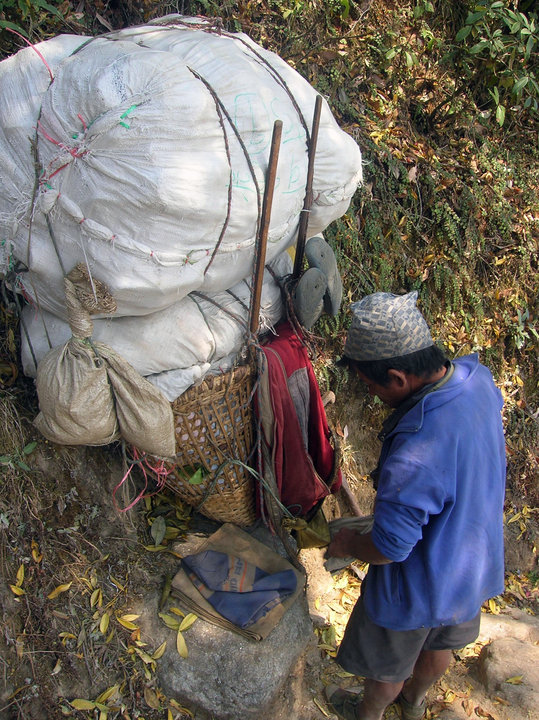
April 9th: Garjang & Deurali to Kenja (1800m)
In the morning, a few of us decided to begin our trek to Deurali because we were itching to walk and hated to drive on these terrible dirt roads. So Heme, Giuli, Brian and me, started walking up to Deurali where we were to rendezvous with the rest of our lazy group coming on the Jeep. It was a steep climb up to Deurali from Garjang (800 meters up). The funny part was that the walkers and the Jeep, pretty much reached Deurali around the same time (about 3 hours). Deurali was a small beautiful village on the top, with a few motels. In the past it must have been a bustling tourist hub on the way to Everest but since has shrunk much because this route was seldom used by tourists who rather take the flight to Lukla directly when heading to Mount Everest base camp. Yet, this must have been the route the great climbers of the past, including Tenzing Norgay and Sir Edmund Hillary, had taken on the way to their epic climbs atop Everest.
After having tea in Deurali we started walking downhill towards Bhandar, a pretty steep downhill dropping 600 meters in about a hour, and very hard on the legs! At around noon, we reached Bhandar where we stopped for lunch. We dined at a local Sherpa restaurant. Ming gently tipped us off that in the past the daughter of the lodge was a hottie and during our school days, they had never missed the chance to get a glance of her!
After Lunch, we headed back into the hot sun, for Kenja, another Sherpa village at the foothills of Lamjura Pass. It was a long but tiresome downhill to Kenja. We finally reached our destination around 4pm. Kenja is situated in the junction between two rivers. And as soon as we dropped our bags in the nearby lodge, we took a plunge in its icy waters . In the evening, we had the usual dal baht, but this time with some fresh fish from the local river, in which we had just been swimming. As we rested, everyone was keeping a watchful eye on the immense 3500m Lamjura Pass towering above. We had a 1700 m climb tomorrow. And amateurs like us would attempt to cross such a pass 🙂
April 10th: Kenja to Junbesi
We started early at 6 for the big climb up to Lamjura, before it got too hot in the day. This was certainly the toughest day of our trek. It was a long winding series of intense climbs followed by long gaps of rest. We had breakfast at Sete, a village we had hoped to make a day earlier, according to our original plan. For lunch, we stopped at Goyam, where we came upon Nak cheese (yak cheese) and managed to gobble a bit. As we gained height, specially around 3000 meters we could sense the altitude affecting us; every few steps of climbing would leave us panting for breath! As we gained altitude, the climate changed dramatically with alpine forests and open grassy meadows near the top of the pass. The only solace during this trek came from the lovely rhododendron flowers blooming left and right in an array of magnificent whites, pinks, and reds, all over the mountain along the paths.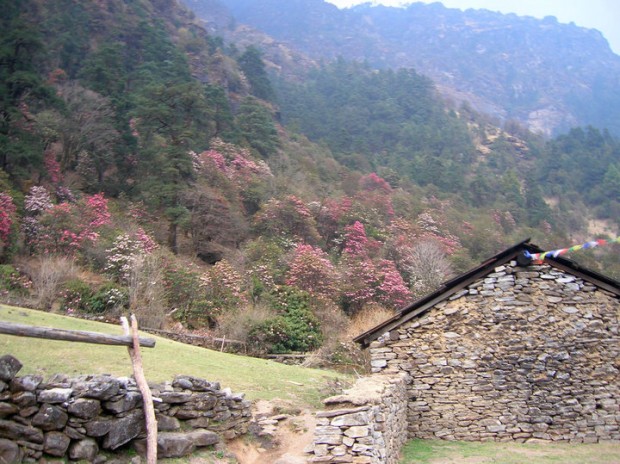
As we descended from the windy Lamjura Pass, we slowly walked down in the forest below to Junbesi, where we found our resting place at Ming’s home, “Ang Chopka” lodge.It was a lovely trek back down with more rhododendron trees all around and a comfortable walk down to Junbesi, a lovely Sherpa Village in a valley in Solu. In the evening, we sat down, sore all over, and could barely do more than just ramble on our experiences of the day! Also since some of our group apparently hadn’t made it to Junbesi by the dark, we were left wondering what happened to them? Could they have stayed on the pass for the evening? Had they found a small guest house on the way down to Junbesi? Around midnight, we had our answer, when we were awakened by shouts outside. Our friends had finally arrived after their epic 18 hour trek, setting up a happy ending to an excruciating day !
April 11th: Junbesi
Today, most of us decided to take a rest while a few left towards neighboring Phurtyang (1.5 hours) for an early morning breakfast and look at Everest and the impressive Himalayan range. In the late morning, Ming took us to an elaborate historical tour of the village. The most fascinating was the monastery in the middle of the village. All its walls and ceilings were painted with Buddhist paintings (Thankas) and in the middle was a huge statue of Buddha. Also, today was the 1st day of the Sherpa festival “Dumje”. This monastery is supposed to be at least 400 years old! I must say a lot of Tibetan traditions are preserved handsomely in the Sherpa communities in Nepal. The elaborate thanka paintings on walls and ceiling show a deep tradition and belief in Buddhism. In the evening, we had time to play some ping-pong duels with the local villages. On top of that it was a sight to see Sherpas playing Cricket! At dinner, we tried the local Junbesi Rice wine and it was superb! It was fascinating to see a village lit 24 hours by micro hydro electricity, when back in the capital city there is no power for 12 hours a day.
April 12th: Junbesi to Pyangboche to Junbesi
The highlight of the day was the trip up near Pyungboche to “Tutenchholing” a mountain monastery complex with 500 nuns and monks. Most of these were Tibetan Refugees who came from Tibet over the last decades. It was fascinating to find a medical school and hospital of Tibetan homeopathic medicine at the monastery. We were greeted by one of the head monks there and given our blessings. We were educated on the concepts of Tibetan medicine and how they rely on different life flows, “chakras,” inside the body and mind. I was determined to try some Tibetan medicine after I was back in Kathmandu. It just sounded a novel way to find out about one’s health and problems. On our way back, we didn’t forget to go for a cold dip in the nearby river. In the evening, as we sat beside 100 Junbesi villagers, we were delighted with the extravagant display of the Sherpa Lama dances in the “dumje” ceremony in the main Junbesi monastery….
April 13th: Junbesi to Phurtyang to Junbesi
Some of us decided to go for an early mountain look, since it rained in the nights and the skies were clear in the morning. We had a lovely outdoor breakfast with different pancakes (apple, orange, cheese), omelettes, and more cheese.
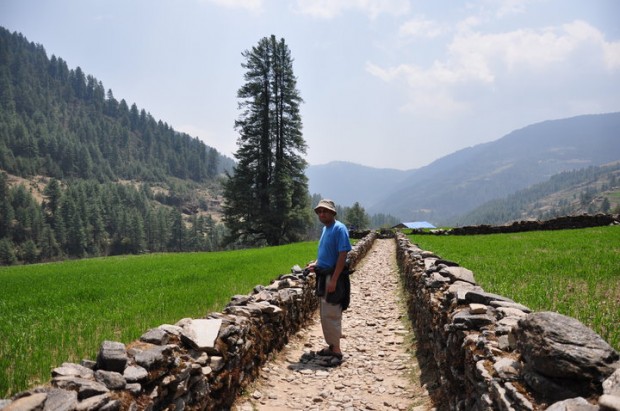
It was an impressive pancake eating day for a few of us. After 3 hours we were back in Junbesi. In the afternoon, three of our team decided to head to a nearby village, Loding, from where they planned to summit Pikey Peak (a 4050m peak with mountain views all around) the next day. Back in Junbesi, a local doctor invited us for dinner and there was supposed to be a local village dance party later, but since it was raining, I stayed back at my lodge and had an early sleep. Kind of ironic since today is Nepali New Year’s Eve! Maybe I just wanted to sleep myself comfortably in the New Year.
April 14th: Junbesi to Phaplu
After four nights, today was the day to leave Junbesi. After a lazy morning, we started walking towards Phaplu, about 3 hours away. We had a scheduled flight a day later in Phaplu in the morning. Along the way, we stopped in a place where two Himalayan rivers met and once again, decided to take a cold dip on the waters here (p.s. it was the Nepali new year so we found an excuse to begin the new year fresh)!
As we made our way up to Phaplu, we gate crashed into a picnic party and started dancing with the locals. Adding spice to the day, was our stay at an impressive Phaplu hotel, Hotel Del’Sherpa, which Ming’s godfather was running. It seemed a fitting finale for an excellent trip. It was a superbly managed hotel with an excellent lobby and fireplaces. And we had it for free, courtesy of Ming. In the evening, a local cousin of Ming, organized a cultural program for us with local youth dance groups dancing to Nepali tunes. And slowly this turned into a night club dance party! There you go, we had our first real village dance party in a long time! By the time we returned to our lodge, we were exhausted and dropped into the luxurious beds that awaited us.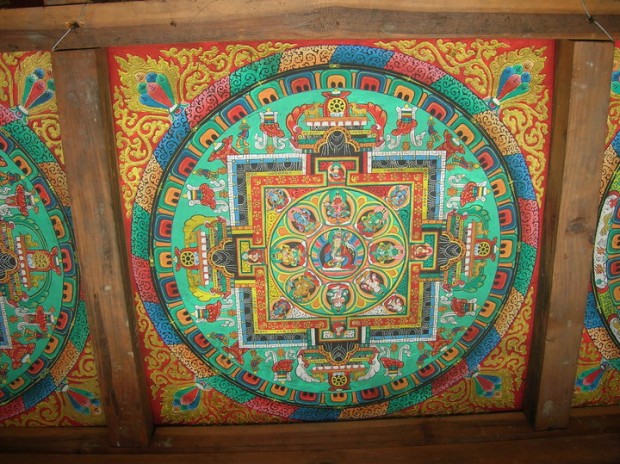
April 15th: Phaplu to Salleri to Phaplu (rest)
No surprise as Nepal airlines canceled their scheduled flight. Never trust Nepal airlines again! So we decided to take a short walk down to Salleri, the district headquarters of Solukhumbu. Prabin and I had a good haircut and shave at a local barbers shop while others toured around a typical small Nepali town. After a nice dal baht lunch, most of the afternoon we stayed in the hotel reading Sherpa history books and Everest diaries of various mountaineers. The hotel was wonderfully equipped with a library of these books, whose knowledge I was glad to readily gobble up. I must add, if we were stuck in Phaplu for a week, I would soon be on my way of becoming an Everest, Tibet, Sherpa culture and, even a Kublai Khan historian. Late afternoon we decided to try the local Sherpa snack, which is basically hell of a lot of boiled potatoes, with local butter, pickles and salt! We must have finished a lot of them, since they took the local motel about an hour and half to boil all those potatoes!
April 16th: Phaplu to Manthali, Ramechap to Kathmandu
After a relaxing day, we again packed up our bags for our flight back home. Although Nepal airlines had confirmed that night before that the flight would come, we were unsure if the Nepal airlines flight would ever arrive. I warn anyone taking the Nepal airlines to keep it as a last, last option. They have no regards for any professionalism, and I simply say to you, “Avoid it at all costs!” We reached the airport around 9 am and waited… and waited…. and by 11 am we pretty much knew, no matter what they promised, the plane was simply not going to come. So we changed tickets to Yeti Airlines (Tara airlines) and took a chartered Pilar Porter flight to Manthali, Ramechap, where we would take a connecting bus to Kathmandu. It was a 7 seater single engine plane. The flight was one hell of a hair-raising 18 minutes experience. Seven of us were carrying our trekking bags on our laps in the back plus 2 pilots, on that 18 minute journey to Manthali. If we had walked, maybe it would have taken us 4 or 5 days.
As we reached Manthali, on the banks of the raging Tamakoshi river, we realized we were suddenly in a very hot place, in stark contrast to the cool climate up in the mountains. Much to our dismay, we found out the local bus had left about 15 minutes earlier. We had a quick-lunch and decided to take the last possible local bus, which went as far as Charikot. The term “local” left us to ponder, as we soon found out, there must have been at least 120 people in a bus that was supposed to carry 30 or 40. The bus was tilting so much to one side that the driver had to throw a quarter of the passengers out. Such greedy bus drivers who carry passengers like cattle are a shame to see ! After a few hours of this harrowing ride along dirt roads and cliffs, we finally reached Naya Pul, just below Charikot, where we waited for a reserved bus, which would take us to Kathmandu. In the end, we reached Kathmandu about 11 in the night, exactly 12 hours since we started in Phaplu, pretty impressive considering it would have taken 24 days to walk down to Kathmandu!









